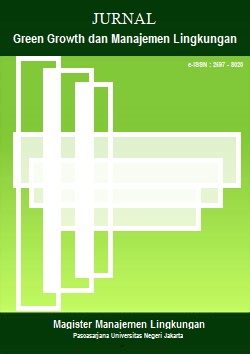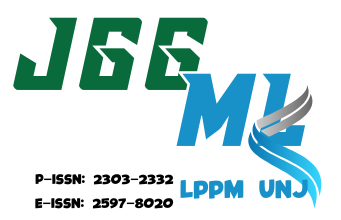MANAJEMEN KOLABORASI DALAM RANGKA PENGELOLAAN SITU RAWA GEDE BERBASIS MASYARAKAT DAN BERKELANJUTAN DI KOTA BEKASI
DOI:
https://doi.org/10.21009/jgg.071.04Keywords:
lake, nature tourism, collaborative managementAbstract
The results of this study focus on policy issues, guidelines, implementation, and expectations for community based lake utilization in order to sustainable lakes in Bekasi City. This paper seeks to analyze the use of lakes, both in terms of tourism benefits, as well as from water reservoir and flood control efforts through policy analysis. Evaluation of the program used by the researchers is Grindle evaluation model that includes the evaluation component policy formulation, programs implementation, resources allocation and target of outcomes. The evaluation related to Water Resources management policy and guidance as stated in Law no. 11 of 1974 on Irrigation and Lokal Regulation No. 13 Year 2011 on RTRW Kota Bekasi Year 2011 up to 2031. Evaluation of programs related to normalization process activities, security of assets/ maintenance, development of water tourism and flood control. Evaluation of resources allocation related to financing activities. Target Outcomes evaluation is related to policy outcome which includes maintenance of water resource asset and flood control. This analysis tries to approach a strategy to consider: sustainable lake tourism management that benefits all parties, both government and society. The results of the analysis show the need for collaborative management among stakeholders (government, lokal government and lokal communities) in sustainable management of the site. The financing is not only the responsibility of the government but can be pursued through public private parthnership.



